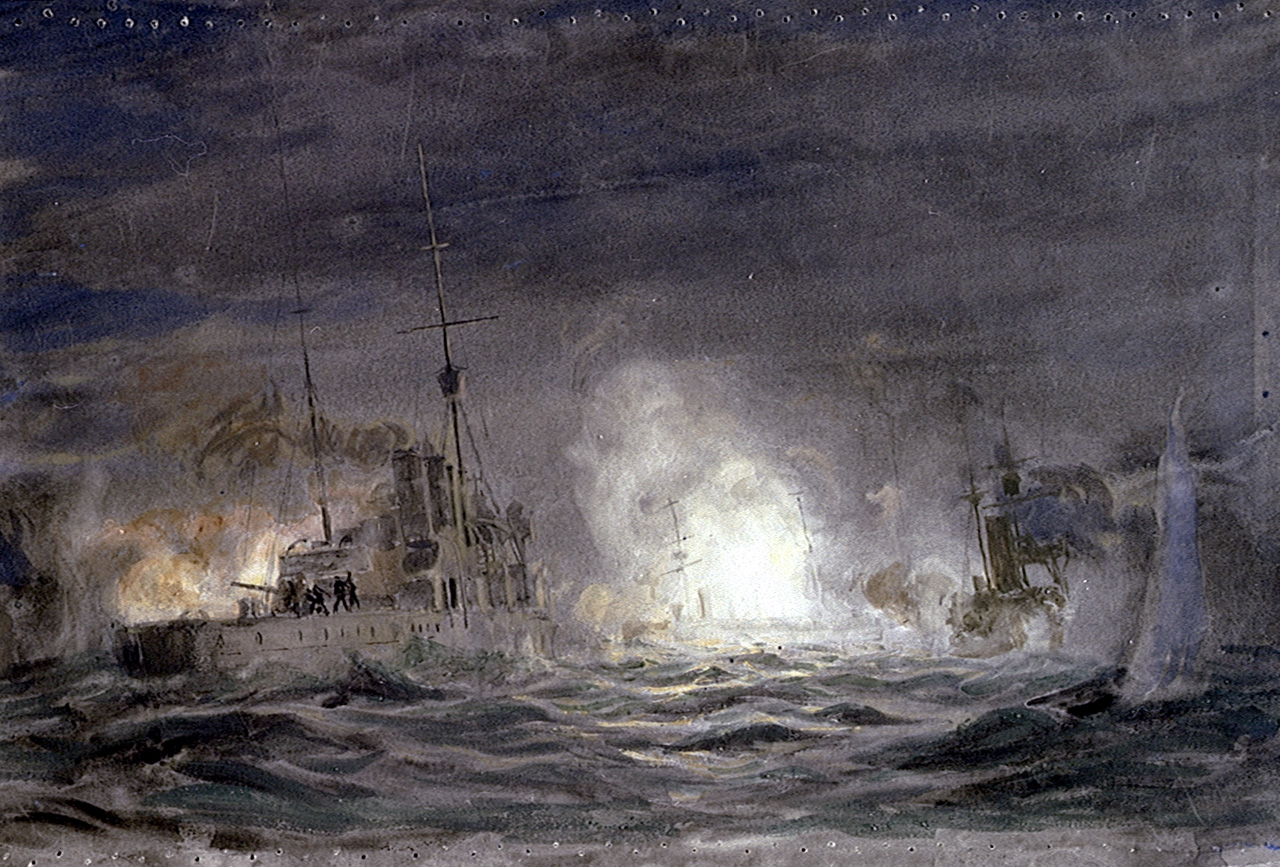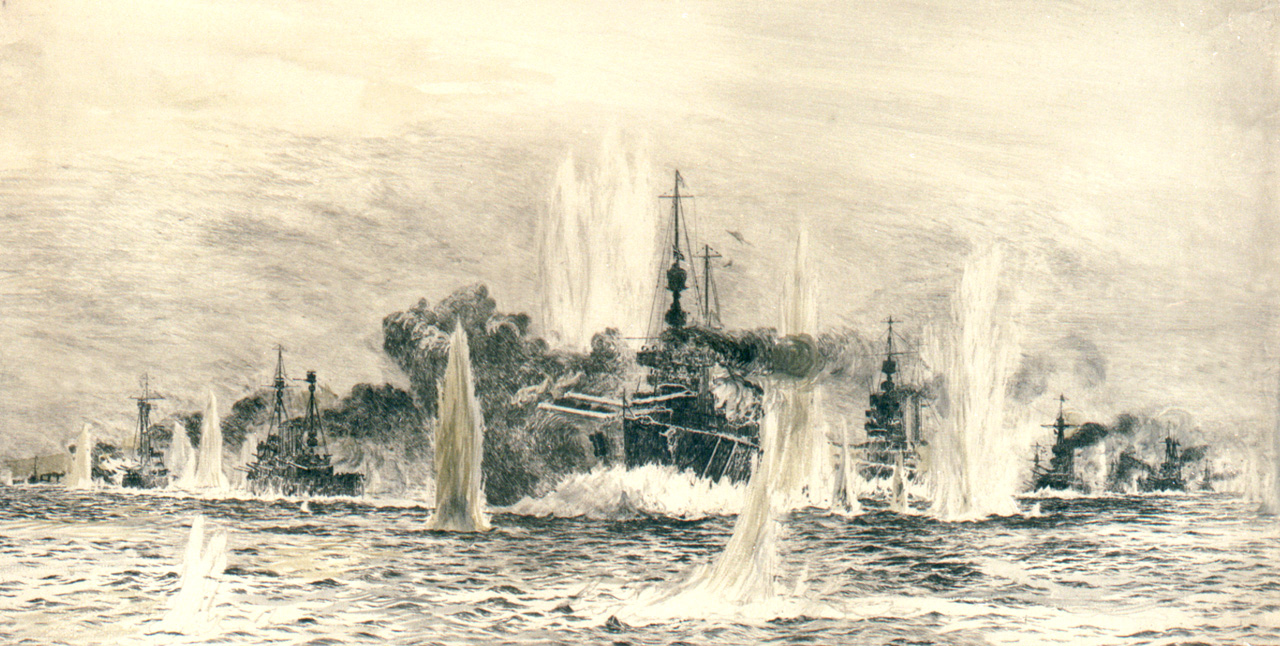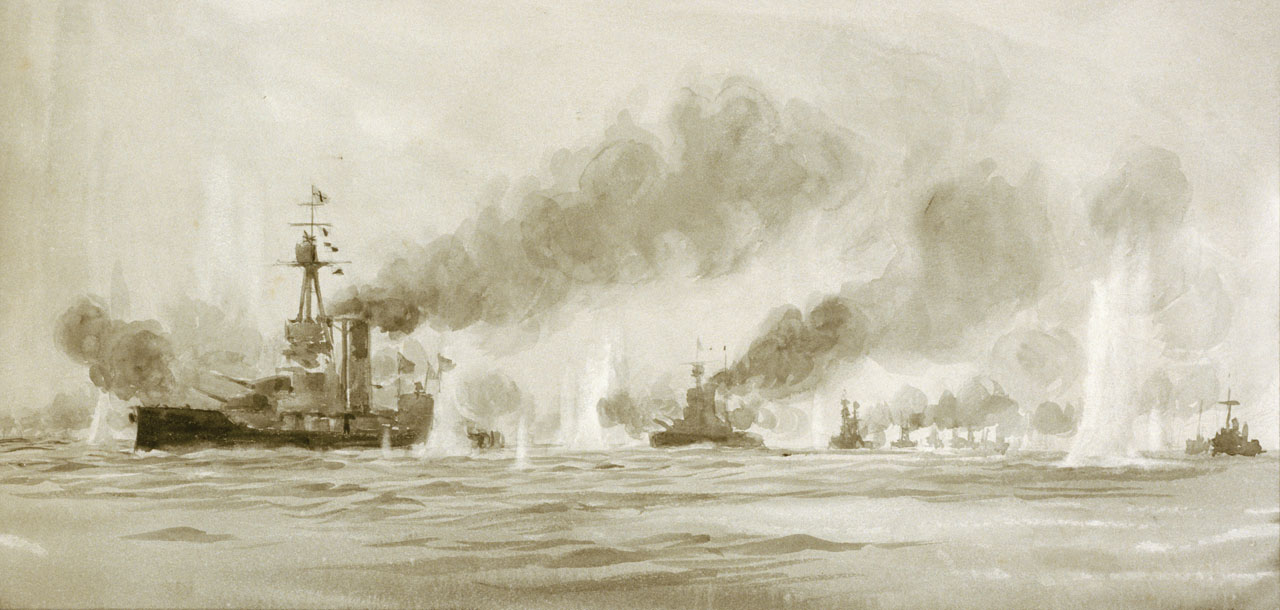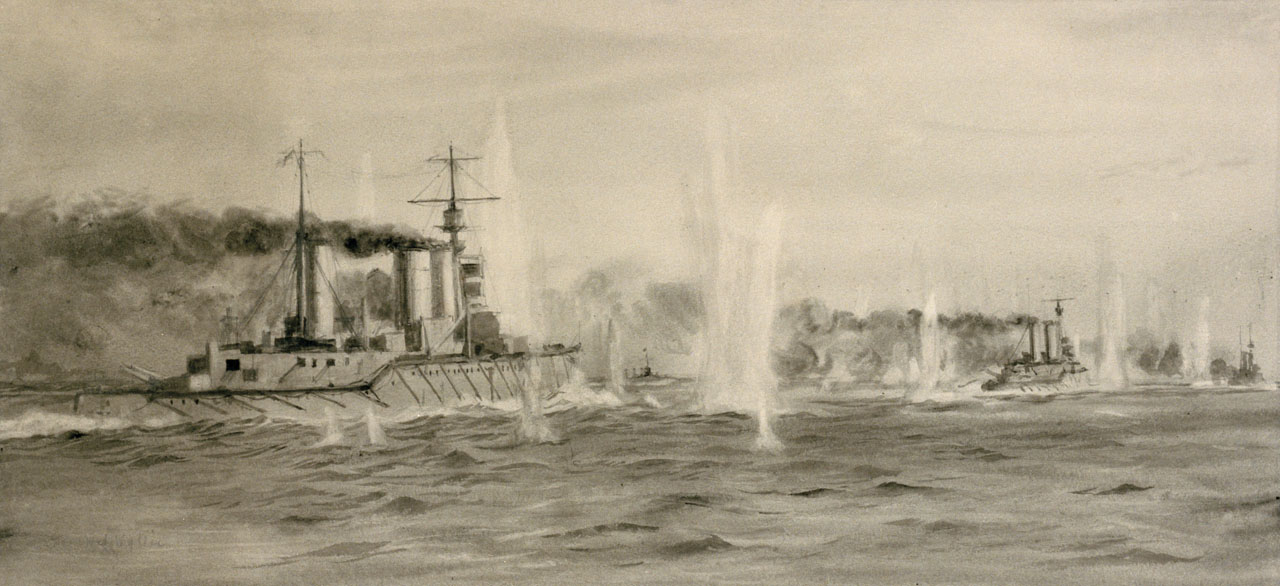In May of 1916, the British and German Fleets clashed in the North Sea. The initial battlecruiser encounter saw three British ships lost to magazine explosions. The battlecruisers, under David Beatty, lead the Germans straight into the teeth of the Grand Fleet under John Jellicoe. The British drove the Germans off, then repeated the performance when the Germans came back. Darkness fell, and Jellicoe had maneuvered his fleet between the Germans and safety, but the Germans broke through the British fleet with minimal losses despite a chaotic series of night actions.

Jutland: Aftermath
As both fleets returned home, the immediate analysis of Jutland on both sides was as a German victory. The Germans had lost one battlecruiser, one pre-dreadnought, four light cruisers, and five destroyers totaling 62,300 tons and approximately 2,500 men killed. The British total was three battlecruisers, three armored cruisers, and eight destroyers, 113,300 tons and about 6,100 men. The Germans also managed to get into port first, and put out a press release while the British were still on their way home, listing British losses accurately, but neglecting to mention the loss of Lutzow. The British government badly bungled their messaging, and the resulting public perception of a defeat deeply shocked the British. The beginning of the Somme pushed it off the front page just as a more nuanced view began to come out. Read more...









Recent Comments